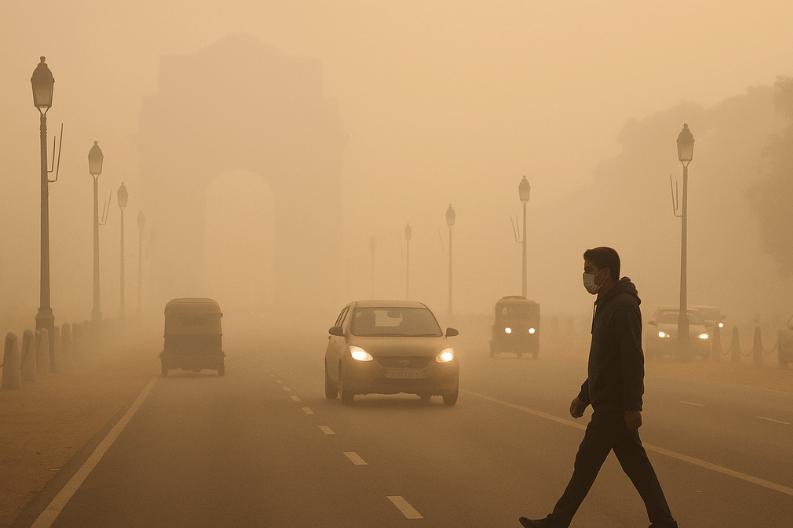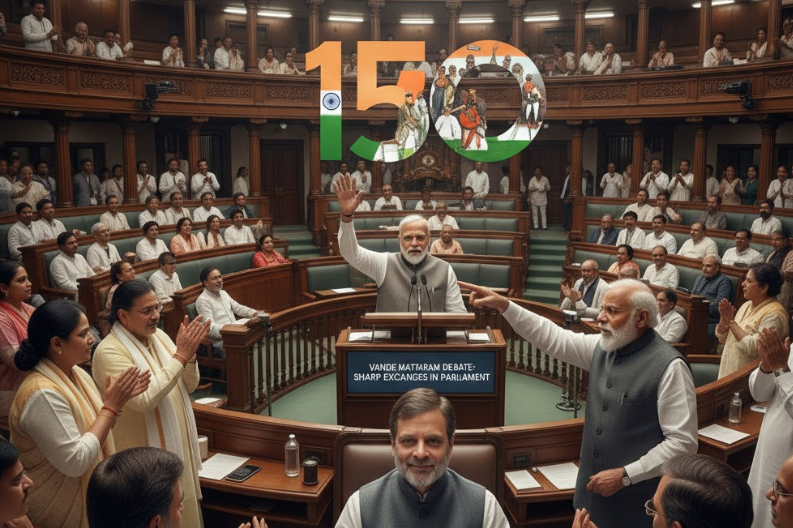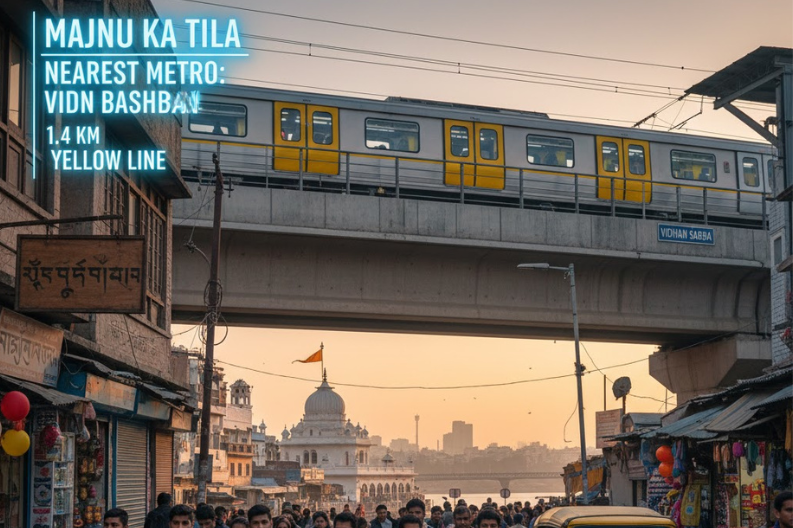Delhi suffers from heavy smog two days after Diwali situation has sparked major concern about rising air pollution in the capital. For the second straight day, Delhi remained under a thick layer of smog. Many residents continued to burst firecrackers long after the permitted hours. Despite the Supreme Court’s clear restrictions on fireworks, several people ignored the rules.
By Wednesday morning, the Central Pollution Control Board (CPCB) recorded Delhi’s Air Quality Index (AQI) at 345, which falls in the “very poor” range. Out of 38 air-monitoring stations, 34 showed “red zone” readings. These indicated air quality between “very poor” and “severe.” The worst-hit areas were Punjabi Bagh and Wazirpur, with AQI levels of 433 and 401, respectively.
To better understand this, the AQI scale measures air as:
0-50 (Good), 51-100 (Satisfactory), 101-200 (Moderate), 201-300 (Poor), 301-400 (Very Poor), and 401-500 (Severe).
Even though stubble burning in Punjab dropped by 77.5% this year, Delhi’s air quality after Diwali was the worst in five years. The average PM2.5 concentration reached 488 micrograms per cubic meter, about 100 times above the safe limit set by the World Health Organization (WHO). These fine particles can cause serious breathing problems and raise the risk of heart disease.
This pollution spike came despite the Supreme Court’s order that allowed only “green firecrackers” for a short period. Fireworks were permitted between 8 pm and 10 pm on Diwali night and between 6 am and 7 pm the previous day. However, many ignored these limits. Firecrackers continued well past midnight, adding heavy smoke and worsening the smog.
The pollution crisis has now turned political. The Aam Aadmi Party (AAP) blamed the Bharatiya Janata Party (BJP) for encouraging the use of firecrackers despite Delhi’s pollution emergency. AAP leader Gopal Rai said that BJP leaders’ actions made the situation worse. And affected nearby cities like Mohali and Chandigarh.
Experts explain that Delhi’s pollution problem is complex. Besides stubble burning, vehicle emissions, construction dust, and industrial pollution play key roles. The combination of fog and low winter temperatures traps pollutants near the ground. This leads to thick smog, especially after festivals like Diwali.
To fight this growing issue, experts recommend stronger coordination between governments, citizens, and environmental groups. Authorities must strictly enforce pollution-control laws and raise awareness about the dangers of burning firecrackers.
However, people can still celebrate safely. Families can choose to light diyas, share sweets, and spend time together instead of using firecrackers. These eco-friendly celebrations keep traditions alive while protecting the air we breathe.
For long-term improvement, Delhi needs cleaner transport systems and wider use of electric vehicles. Expanding public transport and planting more trees can help absorb harmful gases and lower pollution levels. Green spaces also make cities healthier and more pleasant.
In conclusion, Delhi suffers from heavy smog two days after Diwali crisis reminds everyone that small changes in habits can make a big difference. With stronger enforcement, public cooperation, and care for the environment, Delhi can move toward cleaner skies and a healthier future.



